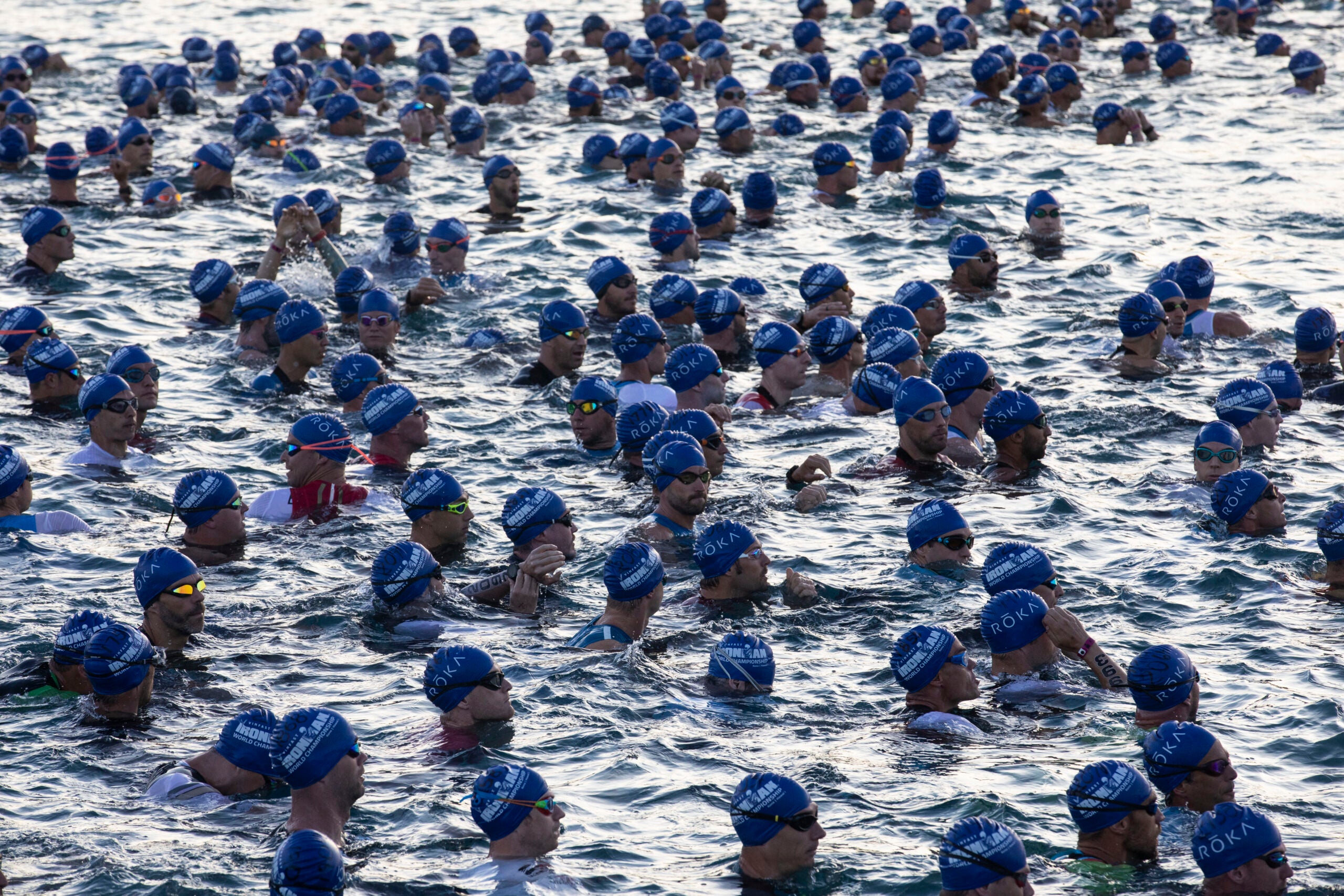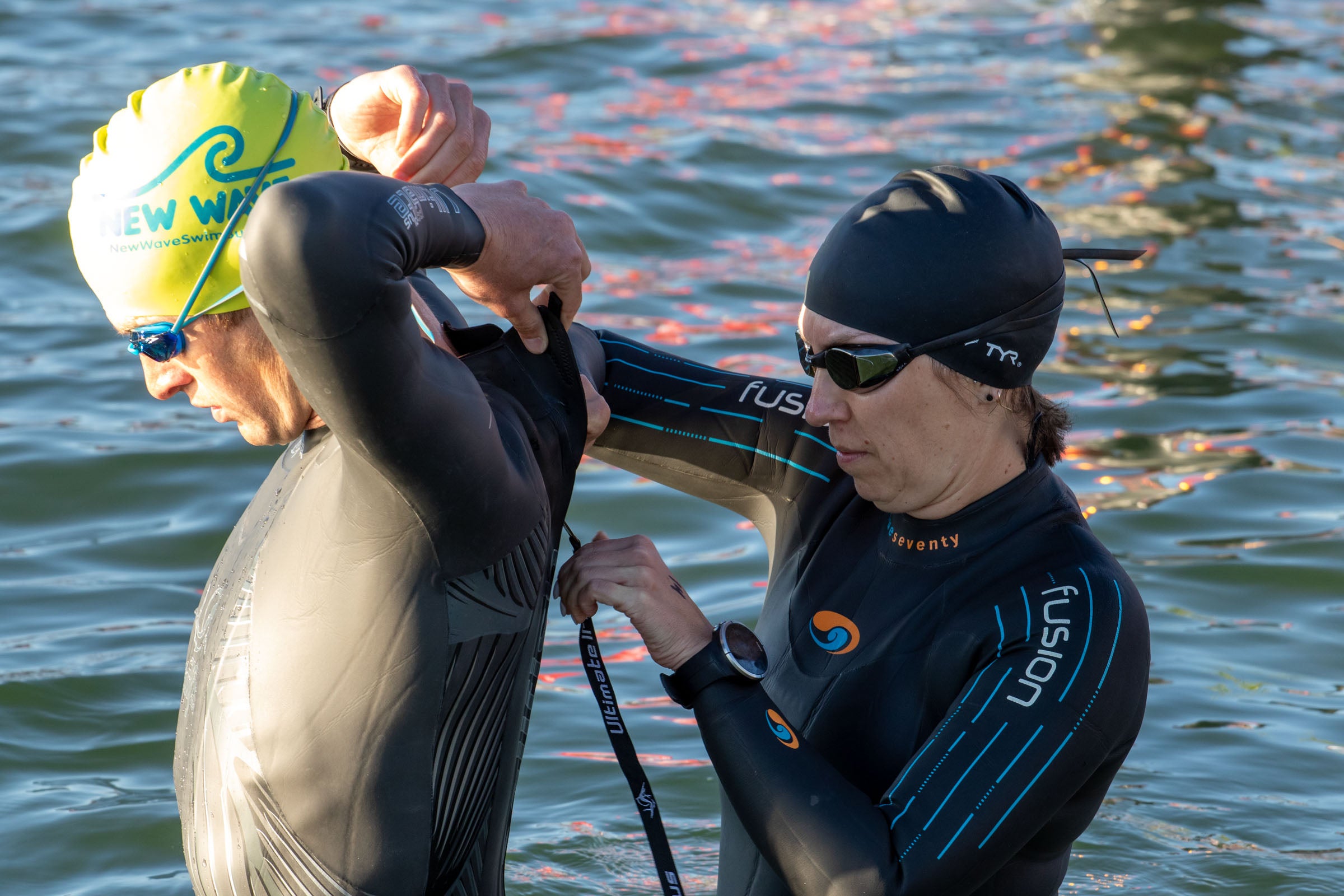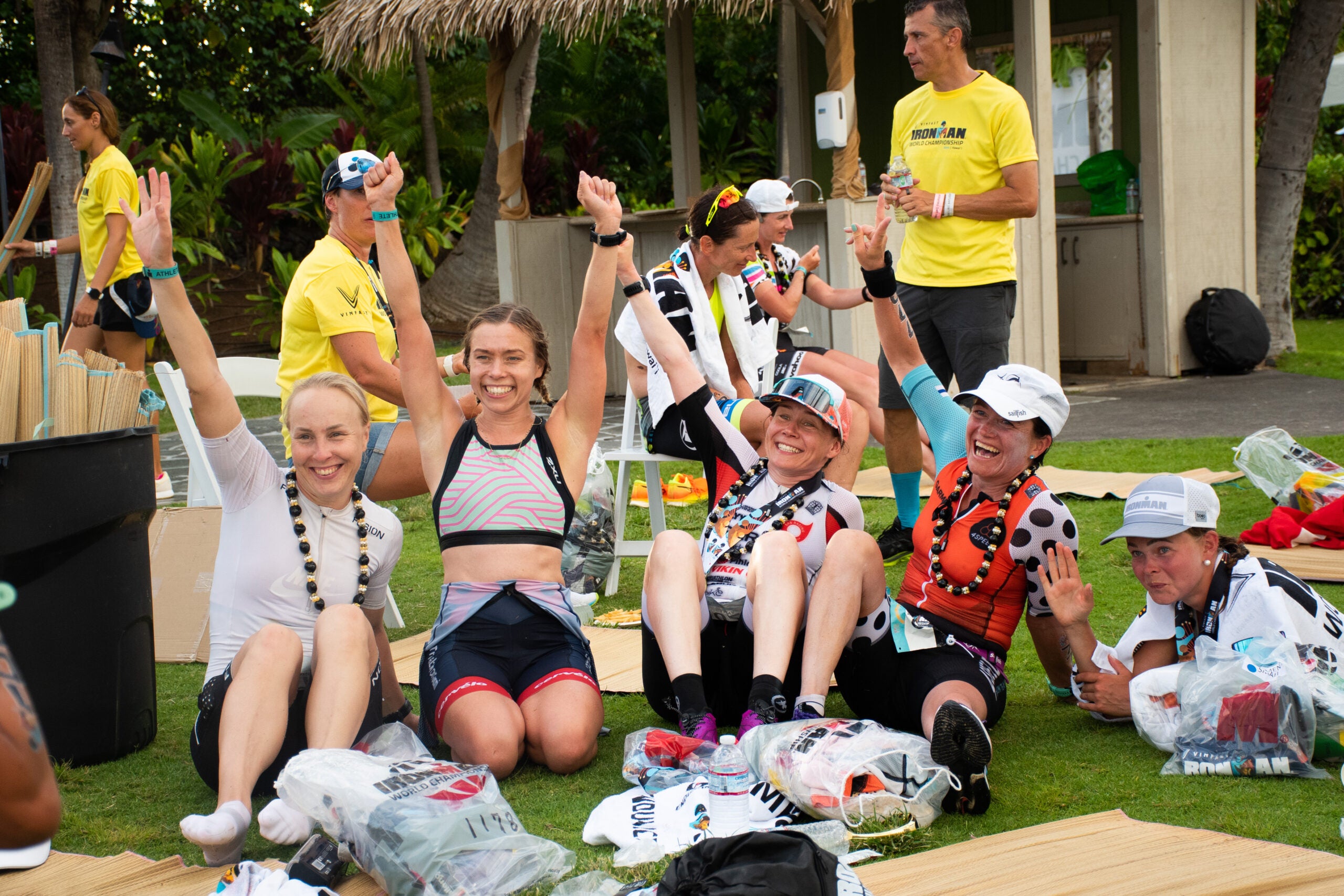New perk! Get after it with local recommendations just for you. Discover nearby events, routes out your door, and hidden gems when you sign up for the Local Running Drop.
All too often, athletes plan their race season backward. They select races first, then insert the training into their calendar and assume it will all work out. Sometimes it does – but other times they realize too late that their race plans aren’t aligned with the rest of their life. Maybe their family vacation or the year-end rush at work falls precisely during peak training weeks, or maybe ski season or that volunteer position impacts training more than they anticipated. Often, though, that “I should’ve known this would be a problem” head slap could’ve been avoided.
So this year, let’s flip the script on season planning. You’ll start with some big-picture thinking to identify what matters most to you across a training and racing season. You’ll use that framework to prioritize the competing factors of race date and distance, camaraderie, venue, course, and logistics considerations. You’ll look at your calendar to find good windows for training and racing. And then you’ll pick your races. You’ll build your race season with intention and in doing so, ensure that your race selection is aligned with both your life outside of triathlon and your priorities within it.
There are a few things to keep track of in this process, so as we go through the exercise you can note your responses using the provided PDF at the button below. Additionally, several of the steps below leverage our Tri Season Post-Mortem worksheet, so if you haven’t yet completed that already, now’s a great time to do so.
In need of some race-spiration? We’ve rounded up over 50 of the best triathlon races in the U.S. for every level of triathlete, from short-course stunners events to Iron-distance showstoppers. Check it out: Triathlete’s 2025 Race Guides
Section divider Section dividerStep by step triathlon season planning
Step 1 : Consider your priorities

Your priorities provide the perspective through which you’ll make all your other decisions. Season planning requires trade-offs, since you’ll virtually never find a race that all your friends are doing on the perfect weekend for your calendar at a super cool venue that’s easy to get to with a course that plays to all of your strengths. So if you can’t have it all, how do you decide which of those factors matters most?
Top priorities: What is it about triathlon that fills your cup?
This question, posed in the Big Picture section of our Tri Season Post-Mortem, asks you to consider what about the sport of triathlon makes you happy. For the purpose of season planning, consider how the areas of process, outcome, race day, social pull, location, and logistics factor into your enjoyment of the sport. Your top priorities represent the lens through which you’ll view trade-offs and compromises as we move through the season planning process.
Supporting priorities: What is the recipe for your perfect race?
All athletes are working with the same ingredients in selecting races: Race date and distance, camaraderie, and venue, course, and logistics considerations. The way you combine those ingredients into your perfect race recipe, though, will be unique to you.
Use the brief descriptions of each top priority and typical associated supporting priorities below as a sounding board. Does one description in particular resonate with you, or do you see yourself in pieces of several descriptions? Key onto your top priority (or two) and then build your recipe of supporting priorities to round out your priority list.
- Process-focused athletes tend to enjoy the training almost more than racing. They typically lean heavily on race date and distance in choosing races to ensure that they can execute their training.
- Outcome-focused athletes place a high emphasis on race results. They often focus on race date, distance, and race course considerations to maximize their training execution and race day potential.
- Race-day driven athletes just really, really love the whole race experience. They want to sprinkle their calendar liberally with race dates and camaraderie, which often plays into race selection.
- Socially-driven athletes value camaraderie above all. Their top and supporting priorities are one and the same. Race venue considerations often come into play as well, as you want to ensure that your host city supports the non-racing activities of your group.
- Location-driven athletes use triathlon as an opportunity to explore a diverse range of race venues and race courses focus heavily on those considerations.
- Logistics-driven athletes seek to minimize the chaos surrounding races; they often confine their races to drivable locations. Race venue and logistics considerations top their list of supporting priorities.
Now that you’ve identified your top and supporting priorities, make sure not to lose sight of them. On your worksheet:
→ If you have one top priority, circle it on the provided worksheet; if you have two, circle the top top priority and underline the second.
→ Underline up to three supporting priorities.
Section dividerStep 2 : Consider race distance (and therefore training volume)

Selecting the race distances for your upcoming season – particularly your longest race distance – goes hand-in-hand with committing to the required training volume. You shouldn’t commit to that training without also considering the time you want/need to direct toward all the other things in your life: work, family and relationships, other hobbies, and additional commitments. So let’s take a look at the work/life/triathlon balance from both subjective and practical perspectives to understand how you’ll be allocating your time next year. We’ll use that to confirm your race distances and draft a rough outline for your upcoming season.
Where does triathlon fit within the rest of your life?
This question, also found within the big picture section of our Tri Season Post-Mortem, asks you to consider where triathlon ranks relative to the other pieces of your life. For the purpose of season planning, we’ll look at how well your balancing act and your prioritization interacted with the other aspects of your life this year to determine what changes, if any, you can, want to, or should make for next year.
- This year’s balance: How did it feel to complete your training alongside everything else that exists in your life? Did it feel manageable? Challenging? Both, but at different times?
- This year’s prioritization: Did the relative prioritization of training and racing work for you? Did it work for the people who you spend time with? How about the ones you work for?
- Next year: Taking those two observations into account, do you want/need to increase, decrease, or maintain a similar level and style of engagement with triathlon for the upcoming year?
With your engagement level defined, you are ready to draft a rough outline for your upcoming season. On your worksheet:
→ First, note the number of races at each distance that you trained for this year. (Yes, trained for, even if you didn’t start/finish the race.)
→ Then, incorporating your insights from above, note how many races at each distance you would like to sign up for next year.
How big is the triathlon piece of your life pie?
Let’s take a closer look at the ways you have/want to spend time outside of triathlon to confirm that you actually have the time available to train for your intended races. We’ll first confirm that the time you devoted to triathlon this year aligned with your race distances and then estimate whether your time available for triathlon next year will be the same as or changed from this year.
- Triathlon this year: Did your training volume this year adequately prepare you for your race distance, and secondarily your race goals? If not, did you underestimate the training required, get sidelined by illness/injury, or have your training limited due to another triathlon-specific factor?
- All the other things this year: Did chronic time constraints, one-off work or personal conflicts, illness/injury, or other work/life factors impact your ability to train this year? Were those unique to last year or are they ongoing factors?
- All the other things next year: Looking at your general buckets of work, family/friends, and other hobbies/commitments, will each of these buckets have similar, increasing, or decreasing demands on your time next year relative to this year? Is anything being added or removed from a bucket?
- Triathlon next year: Taking these observations into account, do you feel that your life can accommodate more, less, or similar training volume next year? And do you need to modify how you associate training volume – or potential volume – with the race distance that you can ultimately prepare for?
RELATED: How Much Time Does it Take to Train for a Triathlon?
With greater clarity on your availability to train and how that corresponds to race distances, create a revised outline for your upcoming season in your worksheet:
→ Incorporating your insights from above, update as appropriate the number of races at each distance you would like to sign up for next year.
Section dividerStep 3: Consider your calendar

Your calendar for the upcoming year provides the context through which you can expand your outline into a rough draft. Identifying obvious training conflicts and challenges as well as weeks and months with few anticipated outside impacts on training guides you toward windows where training and racing fit naturally into your calendar.
When are your “no-fly zones” and busy seasons?
Open up your planner or digital calendar and flip to the year-long view. Find those concrete dates when you know your training will be severely limited: vacations, major personal or work events, or anything else on the calendar that will dramatically interfere with training; we’ll call these your “no-fly zones.” Next, look for “seasons” where consistent training is challenging: weeks or months where you take frequent vacations, busy seasons at work, or windows of higher-than-usual family obligations, for example.
Note those dates and seasons on the calendar provided in the worksheet:
→ First, using a dark-colored pencil or bold/all-caps writing, note your training “no-fly zones.”
→ Next, using a light-colored pencil or smaller/lowercase writing, note your busy seasons.
Where is the natural training season within your upcoming year?
Now step back and take a look at the calendar on the worksheet. Where are the wide open spaces where you can schedule training without conflict, and where are the anticipated challenges? Your goal is to place the races on your calendar such that the training they require avoids those challenges. The following guidelines can help fine-tune your race placement:
- Depending on your base fitness, prior race distances, and how much fitness you’ve held onto since your last race of the season, you’ll want to allow for 3-6 months of training to prepare for a long-course race / 2-4 months to prepare for a short-course race.
- You specifically want to avoid training conflicts for 6-8 weeks leading into a long-course race / 3-5 weeks leading into a short-course race.
- Give yourself adequate time between “A” races: depending on your depth of experience and race distance, plan for a minimum of 5-8 weeks for long-course / 2-4 for short-course. (Don’t be afraid of “no-fly zones” between A races, particularly for long-course athletes; some time off can be beneficial.)
- Bonus points if you can schedule a tune-up race before your “A” race; 4-12 weeks prior to the “A” race for long-course / 2-6 weeks for short-course.
Overlaying the races listed in your Revised Outline onto your calendar may have fit like a glove – or maybe not so much. Your top priorities will guide how to navigate the trade-off between scheduling your training and your racing, including possibly taking a few races off of your list.
Evaluate your trade-offs, update your race numbers at each distance if appropriate, and identify ideal or potential race weekends or windows to create your rough draft in your worksheet:
→ Update as appropriate the number of races at each distance you would like to sign up for next year and note the weekends or months in which you’d like to do those races.
Section dividerStep 4: Race selection

Yes! We’re here. You can finally head to the Internet and start scanning online race calendars. Those calendars inevitably won’t align perfectly with your rough draft, but that’s okay. Through your work above, you have developed a fabulous framework through which you can quickly and easily evaluate all the race choices you scroll through. You know which dates and race distances are ideal for your calendar, but also have your top and supporting priorities to guide your evaluation of other considerations.
Which races lie in the middle of your Venn diagram?
Compare your calendar and priorities to the race lists online and look for those races that land right in the middle of your Venn diagram. Use your top and supporting priorities to navigate trade-offs and compromises. If race venue, race course, or logistics are a priority for you, be sure to dig deeper into your specific priorities within those factors.
- Race venue considerations: Is this a city that you’re excited to visit? What is the vibe of the city? What do the city and its surrounding area offer by way of attractions, nightlife, dining, etcetera?
- Race course considerations: Is the swim in a reservoir, lake, river, or open body of water, and what are the typical water conditions? Is the bike course flat, rolling, or hilly? Same thing for the run course: is it flat, rolling, or hilly? Also, is there shade on the course? Is it a single-transition race or a split-transition race? How is the crowd support along the course? Is it spectator friendly? What is the typical climate on race weekend?
- Logistics/travel considerations: How will you get there, and how long will it take? What about your bike? Where will you stay, and do you need a car? Is there a time change, and if so, how many hours? What’s the local cuisine like relative to what you are used to eating?
Phew! You did it. You walked through the process of identifying your priorities, evaluating your time available for training, and understanding when that training fits on your calendar. You found races that fit all three of those criteria, or come as close as they can to doing so. You planned your season with intention, and set yourself up to enjoy it because your season plan aligns with what matters to you.
With your race season solidified, you can now submit the final draft of your season plan in your worksheet:
→ Note your chosen races and race dates on your final draft. Add reminders to register, if you don’t do that today.
→ Using a brightly colored pencil or different colored pen, add your race choices to the calendar on your worksheet. And tape the completed worksheet to your refrigerator or whiteboard, if you’re so inclined.
